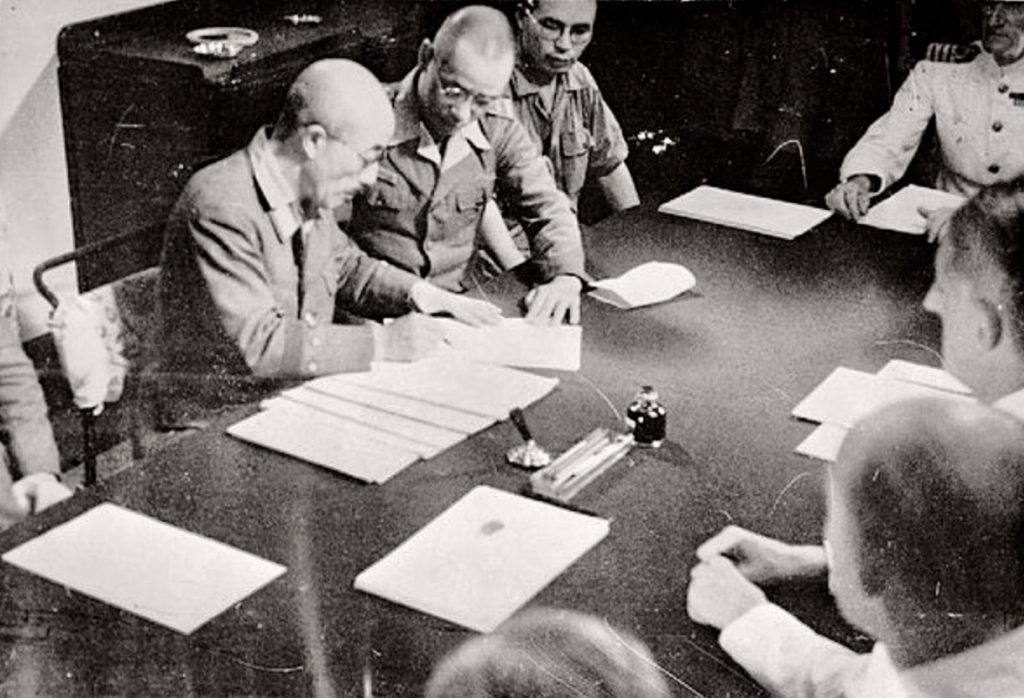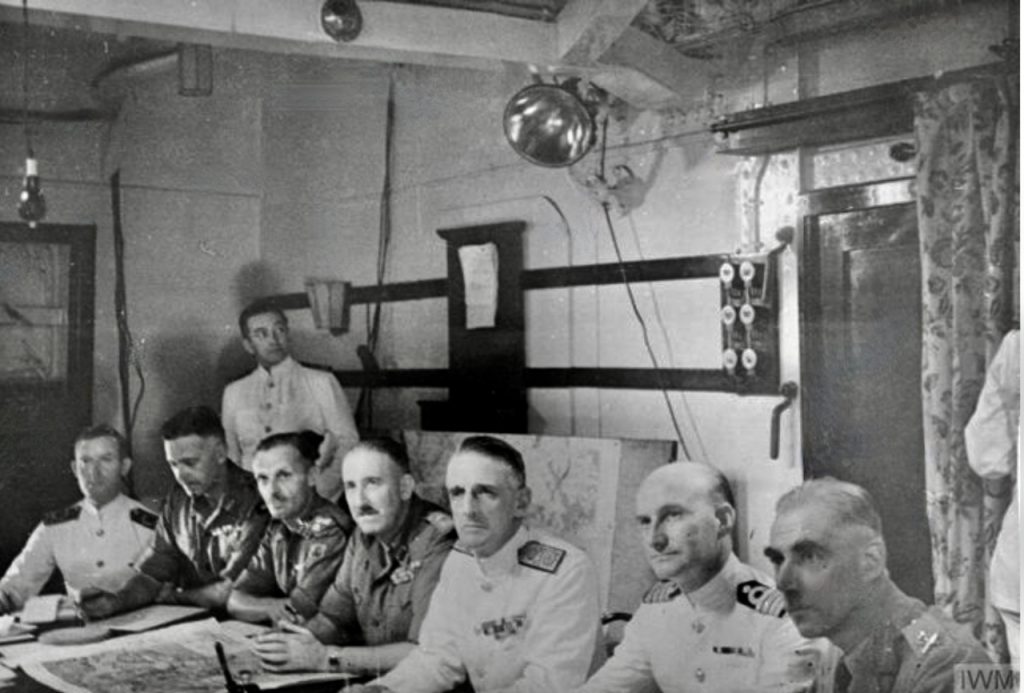Lord Louis Mountbatten, Supreme Allied Commander, Southeast Asia, WW2.

SINGAPORE SURRENDER
Mountbatten stipulated there were to be no Japanese dignitaries attending his funeral. (He died 1979 when assassinated by IRA.) His disdain for his former enemy never waned during those 30 odd years since the end of WW2 in the Pacific.
He hated the Japanese for the extreme brutality and terrible atrocities meted out to British, Canadian, Australian, Indian and New Zealand troops who suffered grievously and perished during their incarceration as POWs. In total there were 128,554 Allied POWs.
Mountbatten was also furious with MacArthur for his slow rescue efforts of British and Allied POWs. It is said MacArthur ordered Mountbatten to halt reinforcements heading towards the POWs which could have arrived weeks earlier before the formal Surrender Ceremony 2 Sep 1945.
On 20 August General Itagaki Seishiro, the commander in Singapore, had signalled Mountbatten that he would abide by his emperor’s decision and was ready to receive instructions for the Japanese surrender of Singapore.
‘Japan’s defeat had caught the Japanese Command in Singapore by surprise. Many were unwilling to surrender and had vowed to fight to the death. Itagaki had initially balked at the order to surrender and instead ordered the 25th Army (the component of the 7th Area Army defending Singapore) to resist when the Allies arrived. There had been a secret plan to massacre all Allied PoWs on Singapore. However, three days after the Emperor’s announcement on 15 August, Itagaki flew from Singapore to Saigon to confer with his leader Field Marshal Count Terauchi, Commander of the Japanese Southern Army and all forces in South-east Asia. Terauchi prevailed over Itagaki who then sent his signal to Mountbatten. Newspapers in Singapore were finally allowed to carry the text of the Emperor’s speech, confirming what many already knew from listening to All India Radio broadcasts from Delhi on forbidden shortwave radios.’
‘The Allies arrived in Malaya 28 August, with a small portion of the fleet sent to recapture Penang as part of Operation Jurist. On 30 Aug 1945 a flight of 9 RAAF Catalinas landed in Singapore bearing medical supplies and personnel documents in preparation for the Japanese surrender and the liberation of the thousands of PoWs on the island. When Penang surrendered without resistance under Operation Jurist, the Allied fleet sailed for Singapore on 2 September, passing the Raffles Lighthouse at the Southern entrance to the Straits of Malacca. The fleet arrived in Singapore on 4 September 1945, meeting no opposition. However, the French battleship Richelieu struck a magnetic mine at 07:44 on 9 September while passing down the Straits of Malacca. She eventually limped into Singapore at 12:00 on 11 September.
General Itagaki, accompanied by Vice Admiral Shigeru Fukudome and his aides, were brought aboard HMS Sussex in Keppel Harbour to discuss the surrender. They were received by Lieutenant-General Sir Philip Christison and Major-General Robert Mansergh. A tense encounter began when a Japanese officer reportedly remarked,
“You are two hours late“
only to be met with the reply
“We don’t keep Tokyo time here.“
By 18:00, the Japanese had surrendered their forces on the island. An estimated 77,000 Japanese troops from Singapore were captured, plus another 26,000 from Malaya.
The formal surrender was finalised on 12 September at Singapore City Hall. Lord Louis Mountbatten, Supreme Allied Commander of Southeast Asia Command, came to Singapore to receive the formal surrender of Japanese forces in South East Asia from General Itagaki on behalf of Field Marshal Hisaichi Terauchi, commander of the Japanese Southern Army Group who had suffered a stroke earlier in the year. A British Military Administration was formed to govern the island until March 1946. Itagaki departed for Japan shortly afterwards to face trial and execution as a war criminal.’
Itagaki had met his generals and senior staff at his HQ at the former Raffles College in Bukit Timah and told his men that they would have to obey the surrender instructions and keep the peace. That night, more than 300 officers and men killed themselves by falling onto their swords in the Raffles Hotel after a farewell sake party, and later, an entire Japanese platoon killed themselves using grenades.
Below: Mountbatten and MacArthur

Below: General Seishiro Itagaki on board HMS Essex 4 September 1945


Above: Japanese Army and Naval Commanders take their seats before the signing of the terms of agreement for the re-occupation of Singapore. Itagaki (right) and an Army Staff Officer are already sitting, and Admiral Fukodome (left) is moving to his chair

Above: British Representatives at the conference table. Left to right: Lieut F P Donachie, RNVR, Flag Lieutenant; Major General Mansergh; Brigadier N D Wingrove; Lieut General Christison; Rear Admiral Holland; Captain C F J Lloyd, DSC, RN, Chief of Staff; Major General H R Hone, CBE, MC, KC, Civil Affairs Officer.
Below: We wish to acknowledge AWM for copy of this photo taken outside Singapore City Hall after signing surrender.


Above: We wish to acknowledge IWM for copy of this photograph taken 12 September, 1945 Singapore.

Above: Royal Navy Cruiser HMS Sussex tied up at wharf, Singapore, Straits Settlements September 1945.
Below: Sussex at sea.


Above: Japanese Surrender at Singapore, 12 September 1945 Admiral Lord Louis Mountbatten reads the surrender terms to the Japanese delegates.
